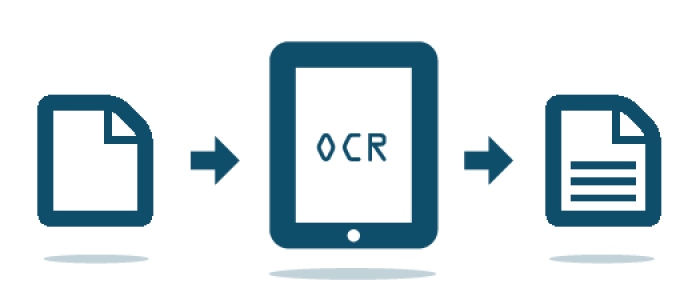This is when individuals worldwide want convenience in all of their daily tasks and hence do not want to wait in the long queues. But when fraudsters increased their tactics, businesses leveled their security to combat such frauds and heinous tactics. Companies cannot compromise in providing their customers with efficient customer services and therefore are entitled to offer great benefits for an enhanced reputation.
But for clients, entering manual details and standing for long hours and waiting is the most irritating. Even though multiple businesses have arranged auto-fill into their online forms, some institutions have yet to update it as a security measure.
Nevertheless, to combat such issues, some corporations have embraced optical character recognition technology.
OCR technology – Optical Character Recognition Software
OCR or also known as optical character recognition, digitally captures images and converts them into readable and editable text. The main aim of the software is to extract the text from the documents and convert it into a searchable format or one can say editable format. The text that can be edited once it was printed onto hard copies has provided immense benefits to the digital world especially when it shifted to digital format.
The Process of OCR services
- OCR app scans the documents and separates the text from the white spaces to extract the text easily.
- The text is then extracted and then converted into a digital format that can be used for various purposes.
- The purpose mainly involves editing, selecting, and searching.
- The text is then visible to the user who wanted to extract the text from the OCR app.
A Simple Day to Day Example of OCR Screening
There have been multiple use cases of OCR technology but one can explain it through a daily example. For instance, OCR services are being used by individuals who have books published onto hardcopies and they want to extract a specific part of the text to maybe use it for theory purposes. They then scan the document through the software and then convert the text into an editable format.
Another popular example is of restaurants that have their menus printed in their home language and foreigners are unable to read them. The foreigners then extract the text through the OCR app and then translation applications translate into the language the user desires. Also, read about Local Digital Business.
Use Cases of OCR Technology
The Banking Sector
On a daily basis, banks encore zillions of people and have to deal with their documentation such as bank forms. The documents that are used by banks require customers to fill in relevant details that can later be used on digital platforms to access digital banking services.
Banks, many years ago, shifted to a centralized banking system that is available digitally to provide customers with an enhanced experience. This is why ATM machines are using OCR technology to extract information from credit cards and then provide the relevant services to their users.
The OCR services have also provided benefits to banks when wanting to onboard a customer. The picture of the user is uploaded and the forms available in hard copy extract the relevant information. Therefore, the speed of the banks has increased when onboarding customers. Additionally, banks are also using OCR technology to extract information from credit cards and hence saving time.
Healthcare Institutes
Hospitals and clinics have to face multiple patients on a daily basis and their relevant documents can get lost in the hectic process. This is why hospitals also shifted their patient’s relevant details on digital platforms such as treatments, symptoms, and prescribed medications to enhance the patient’s experience and to help the staff cut down irrelevant routines. But when digital reports were not established and the traditional methods were used it was difficult for care teams to extract the information of the patient promptly and then they spent heaps of time finding the relevant information.
ICR technology can read cursive handwriting too which is not available in OCR technology which makes it the only drawback of the software. Cursive handwriting is usually written by doctors carelessly and it is really difficult to interpret without practicing.
Identity Verification
Identity verification services are using OCR compliance to extract information from the documents of individuals when identifying them. Identity verification is essential for businesses to comply with KYC regulations.
Conclusion
Even when the world was facing a pandemic and it was in chaos, OCR technology was assisting many businesses and individuals to extract information and provided them multiple advantages. Therefore, OCR technology must not be ignored and must be adopted by all businesses such as in identity verification.


























